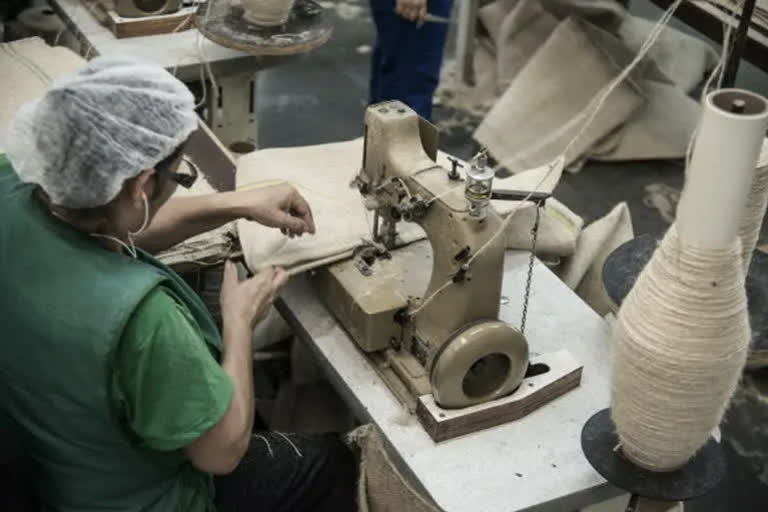Kolkata: Battered by raw material shortage and supply chain disruptions due to the ongoing COVID-19 pandemic, the more than 150-year-old jute industry failed to meet demand for foodgrain packaging in 2021.
Around 4.8 lakh bales of jute bags worth Rs 1,500 crore could not be supplied and were replaced by plastic in November and December 2021 as mills could not supply the environment-friendly packaging material.
"More such moves are on the cards as millers are facing difficulties in procuring the raw material at notified prices and they are unlikely to meet gunny bag demand," an industry source said.
The sector, which provides employment to nearly 3.7 lakh workers and several lakh farmer families in West Bengal, Bihar, Odisha, Assam, Andhra Pradesh, Meghalaya and Tripura, was "under stress in 2021 with an unprecedented rise in raw jute price, closure of manufacturing units and job losses, and the industry will remain so unless the raw material issues get resolved", a mill owner said.
The sector regulator has capped the price of raw jute for mills at Rs 6,500 a quintal when the market price was over Rs 7,000.
This has become a contentious issue as mills that consume the maximum amount of the golden fibre for manufacturing sacks meant for foodgrain packaging could not procure the raw material at the officially-set price.
According to industry sources the regulator did not consider the request of the millers' body to do away with the ceiling price mechanism or at least fix it at a market rate of Rs 7,200 per quintal.
We have advised mills not to procure raw jute at prices over Rs 6,500 per quintal after the Union Textile Ministry did not accept our proposal to either scrap the ceiling price or at least revise it to the market price of Rs 7,200 per quintal, Indian Jute Mills Association chairman Raghavendra Gupta said.
Also Read:Year Ender 2021: Athletes who kept hopes alive in another pandemic year
The raw jute price is currently at around Rs 7,000 a quintal.
The raw jute supplies to mills in Kolkata have "shrunk drastically" after the government fixed the price, which, according to traders, was not remunerative, Jute Balers' Association Secretary A K Palit said.
Jute Commissioner's office, however, said the price intervention move was taken to stop hoarding by traders and millers.
IJMA however projected that at the current level of production and availability of raw jute, millers can supply approximately 32 lakh bales of hessian sacks annually for foodgrain packaging as against the requirement of 45-46 lakh bales.
Dilution of hessian sack orders was effected during the year even though the Narendra Modi government approved reservation norms for mandatory use of the golden fibre for 100 per cent foodgrain packaging and 20 per cent sugar packaging for the Jute year 2021-22 (July 2021-June 2022), the industry source said.
The reservations norms under JPM Act provide direct employment to lakhs of mill workers and four million farmers in the jute sector, an official said.
JPM Act, 1987 protects the interest of jute farmers, workers and people engaged in jute goods production, he said.
West Bengal Labour Minister Becharam Manna alleged that the Centre is not protecting the interest of the jute industry that provides direct employment to 2.5 lakh people in the state and instead promoting plastic packaging materials.
Our state is a major jute producing state. The sector is set to face a very difficult situation as the BJP government is promoting the plastic and synthetic sector and destroying the jute industry in Bengal where lakhs of people are directly and indirectly dependent on it. I am trying my best to reopen mills, he told PTI.
The Centre purchases jute sacking bags worth approximately Rs 8,000 crore every year for packaging foodgrains, hence ensuring a guaranteed market for millers, the official said.
Around 75 per cent of the total production of the industry is sacking bags of which 90 per cent is supplied to Food Corporation of India and state procurement agencies and the rest is exported or sold directly by millers.
PTI
